If you are looking to add a source of lasting fruit to your landscape this year, spring is a great time to do it by planting a few fruit trees in your yard!
Nothing else really compares to walking out to your own backyard to pick a fresh, juicy peach, apple or cherry off of a tree you planted yourself. It’s even better when that tree produces enough fruit to preserve and share with family and friends to enjoy all year long.
Sure, established mature fruit trees take a few years before you are rewarded with a bountiful harvest. But it is definitely worth the wait – and a lot easier than you might think to plant them in the springtime!
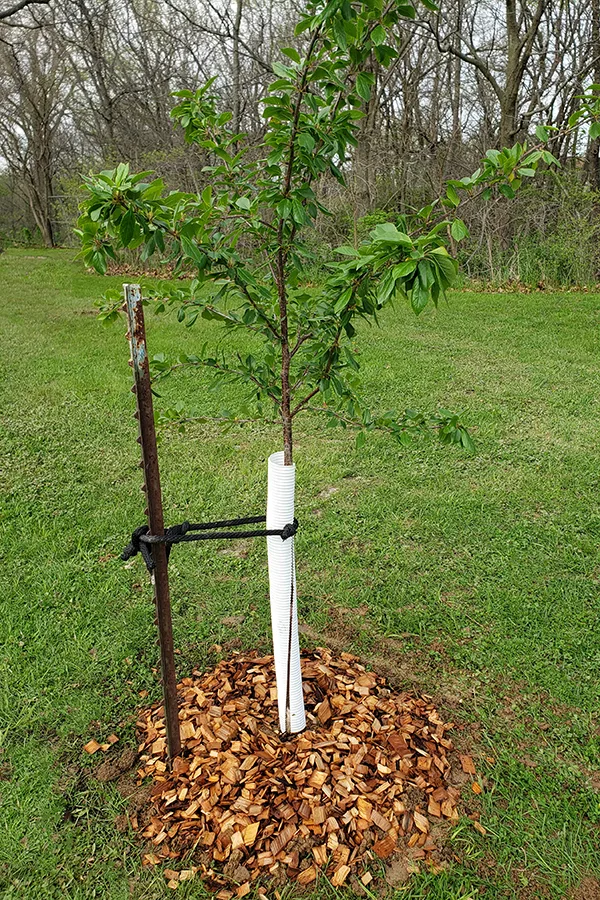
There are many different opinions about when the best time is to plant fruit trees. Some suggest planting in the fall to allow plants to get established before the ground freezes. Others say that spring is the best time to plant.
In this article, you’ll learn the advantages of planting in the spring as well as the steps needed to do so. While it might take some patience, your fruit trees will soon be producing more fruit than you know what to do with!
Advantages Of Planting In The Spring
While planting fruit trees in the fall is great for some people and situations, it doesn’t work for everyone.
First off, it can be hard to find that exact fruit tree variety you are looking for once fall rolls around. Many different garden centers and online orchards have already sold out of much of their stock by the time fall arrives.
Sure, you might be able to get some discounted fruit trees in the fall. However, they likely won’t be the exact variety you are after. When you are planting something as permanent as a tree on your property, you definitely want to get the exact variety you are looking for!
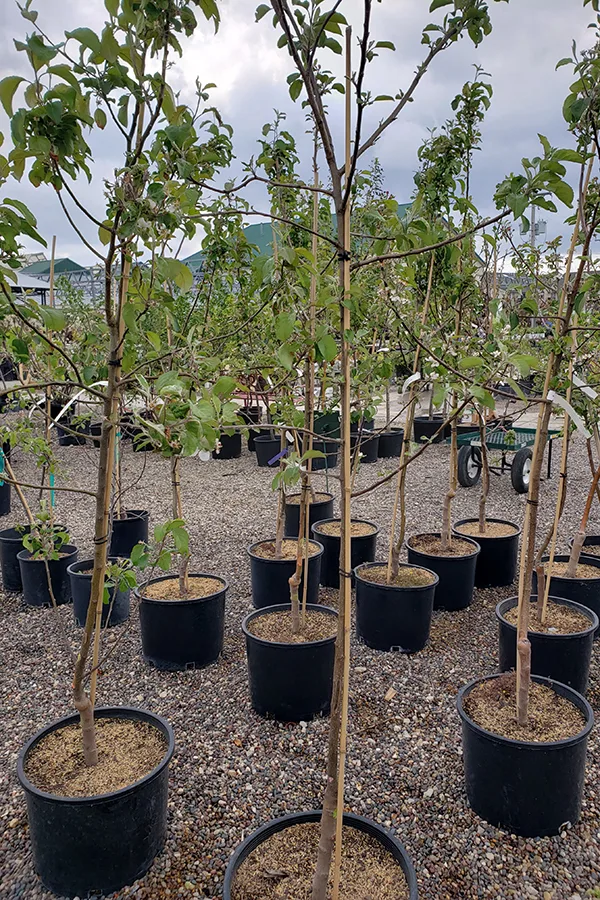
Another advantage to planting in the early spring is that you are able to get the tree planted as soon as the ground is workable. One thing is for sure, once you have your fruit tree in hand, you will want to get it into the ground as soon as possible before summer heat hits.
Planting Fruit Trees In The Spring
Research Before Purchasing
Before you run out to your local garden center or hit “check out” on your online purchase, you want to take a few minutes to do a bit of research first.
Not all fruit trees can grow in all growing zones. If you live in northern climates with cold winters, you are going to need to purchase cold-hardy fruit trees. Similarly, some fruit trees need a specific amount of “chill hours” in order to help them set fruit. If you live in the southern locations, you will need to choose a different cultivator.
Another consideration to keep in mind is that some fruit varieties need to have a pollinator in order to produce fruit. Other varieties are considered “self-pollinators” and can get by without a second pollinator tree.
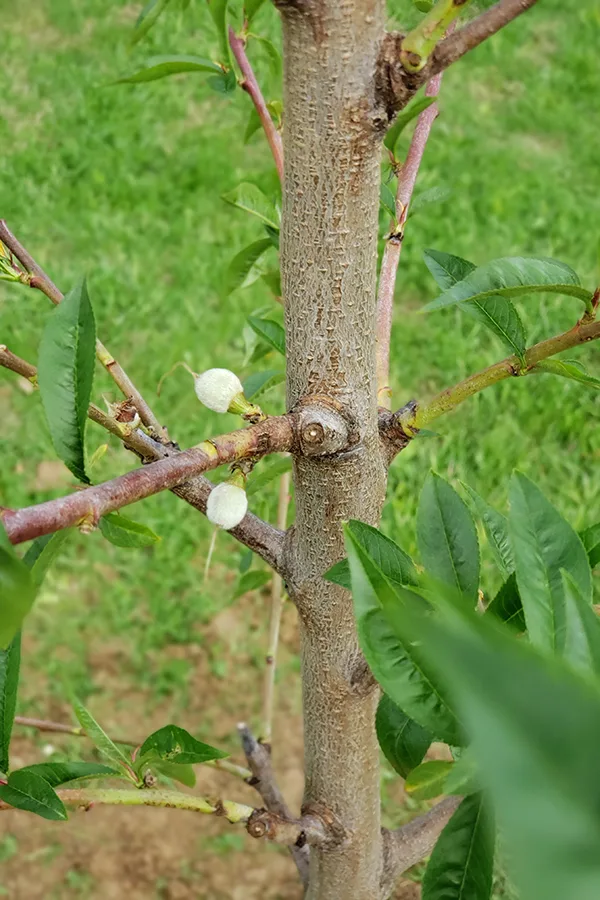
For example, most sweet cherry trees need to be planted within 100 feet of another sweet cherry tree in order to have the proper cross-pollination. Most tart cherry trees, however, are self-pollinating so you only need to purchase one. Depending on your space and budget, this can play a factor in what you end up purchasing.
Consider The Tree’s Mature Size
Another factor to consider when choosing your fruit trees is its mature size. At the time of purchasing, most fruit trees are only around 4 to 6 feet tall. It can be hard to envision that a tree that small will eventually turn into a massive, full-sized tree at some point.
Trees labeled as standard sizes can grow as big as 30 feet tall and wide. Dwarf varieties grow to around 8 to 10 feet tall and wide. Semi-dwarf trees are somewhere in between the two sizes. Most cultivators are available in all three of the different mature sizes. Shop around and be sure to choose one that works for your location, even if you are limited in space.
Choosing Your Growing Location
Now that you have a good idea of the type of fruit trees you want and whether they need pollinators or not, you can pick their growing location.
Again, consider the fruit tree’s mature size when choosing its permanent growing location. Unlike your vegetable garden where you can (and should) rotate crops yearly, any fruit trees you plant will be there for many years to come.
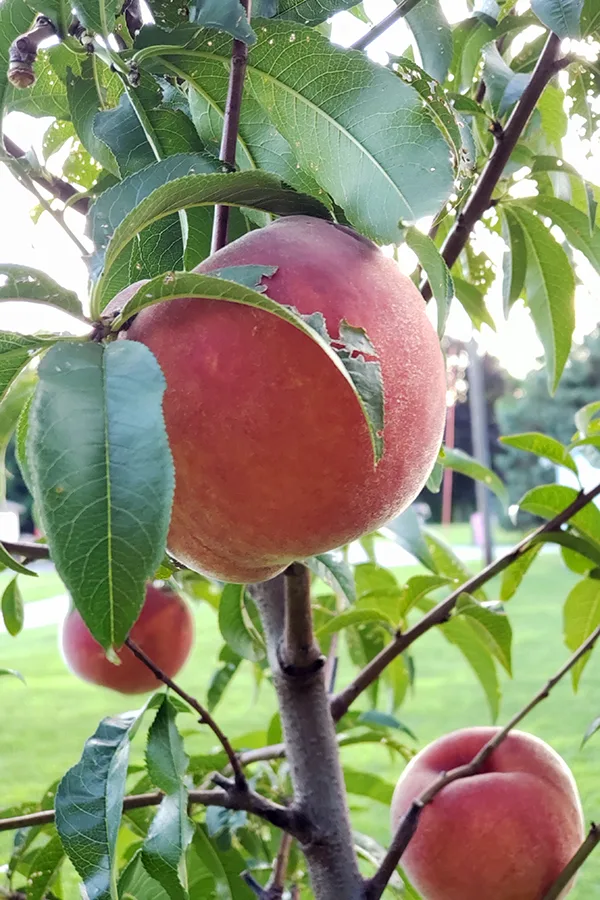
Most fruit trees will require full sun in order to produce blooms (at least 6 to 8 hours a day). Multiple blooms equal multiple chances for mature fruit in the late summer and fall months. So be sure to plant in a location where the tree will receive more than enough sunlight.
Another consideration is the type of soil in your desired location. Ensure that the soil drains well and doesn’t have standing water after heavy rains. Adding compost at the time of planting will help give trees that extra boost of nutrients they need to really start producing foliage and become established.
How To Plant Fruit Trees In The Spring
Your tree will likely come in one of two ways, bare root or potted. Bare root trees will be dormant and should be planted as soon as possible after receiving them. About three to four hours before planting, place the bare-rooted trees in a bucket of water. Be sure to fully submerge the roots.
Potted fruit trees can be kept in their containers for a few days prior to planting if needed. Just be sure to keep them watered and in a protected space away from strong winds.
Digging The Hole
Dig a hole that is around two times the diameter of your tree’s bare root or root ball. The hole should be about one and a half times the depth of the tree’s container. Use the tip of the shovel to repeatedly slice into all the sides and bottom of the hole.
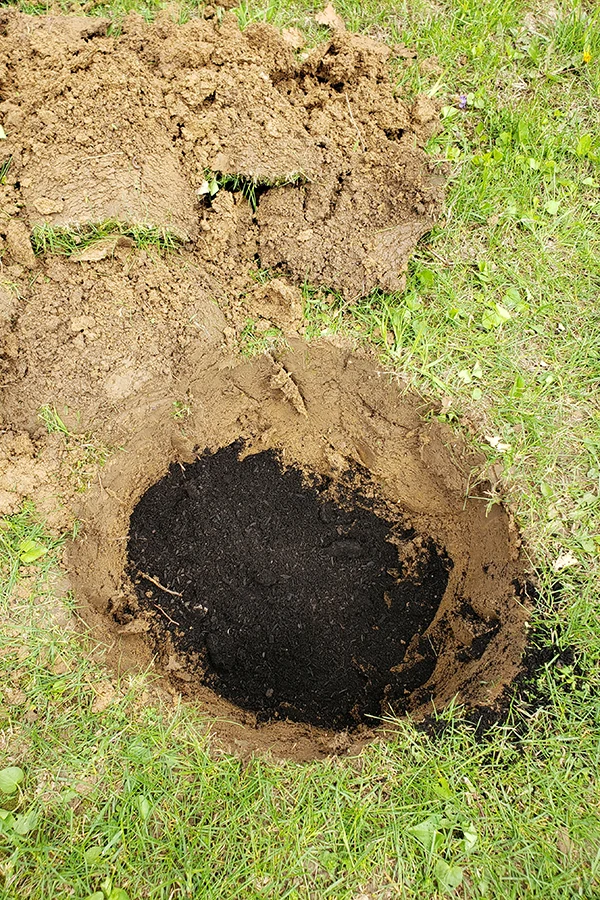
This helps break up the soil and allows the roots find spaces to grow into. It is especially helpful if you have very dense clay-like soil. Add in equal amounts of soil and compost back into the hole. Continue until the top of the root ball sits an inch or two above the top soil line.
Adding The Tree – Planting Fruit Trees In The Spring
For bare-root plants, create a bit of a pyramid at the bottom of the hole. Once you sit your bare root on the pyramid, you can evenly spread out the roots around the edges. For potted fruit trees, loosen the root ball carefully over the hole. This helps to spread out the roots before placing it into the hole.
Ensure that the graft is above the soil line by two to three inches. If it isn’t, add more soil to the bottom of the hole and replace the tree. You do not want to bury the rootstock! Backfill with the remaining soil. Make sure to lightly shake the tree occasionally to ensure that the soil is filling in around the roots.
While planting, step back occasionally to make sure the tree is standing straight as you add the soil. It’s easier to adjust this as you go as opposed to trying to fix a crooked tree when finished. When you have added enough soil so you have a slight mound around the trunk, tamp down the soil evenly.
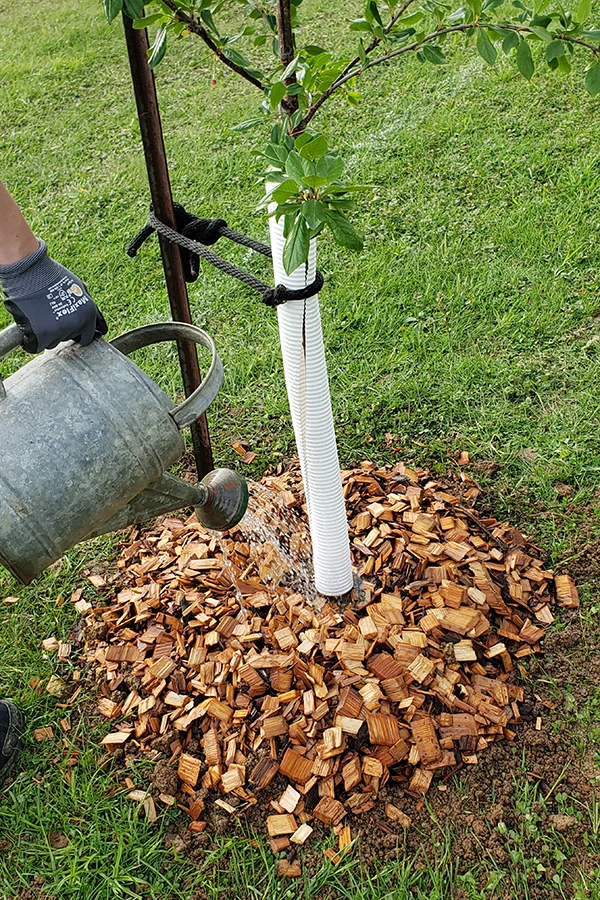
Mulch & Water
Add two to three inches of natural mulch around the base of the tree. Wood chips, straw, or even shredded leaves all work well. The mulch will help to retain moisture as well as give the roots added protection in case of a late cold spell in the spring. It also helps to stop weeds from establishing too.
Think of the mulch as a “donut” shape around the trunk as opposed to a volcano. This will help water drain directly to the trunk and around the roots. Lastly, give the newly planted tree a good drink of water.
Additional Tips – Planting Fruit Trees In The Spring
It is a good idea after planting to add an animal guard around the base of new fruit trees. This will help prevent hungry deer and other wildlife from taking a nibble or two out of your young tree trunk. Affiliate Product Link : Animal Tree Guard
When planting in a location that can receive high winds, it’s best to add a stake to tie the tree to. This will give the young trunks a bit of added protection and stability as the trees become established.
Be sure to water newly planted trees often, especially if you go a while without rainfall. Trees should get at least two to three gallons of water weekly. Doing a good deep soaking once or twice a week is much better than small daily waterings.
Stay up on pruning your fruit trees in the fall and be on the lookout for any pests or early signs of disease. It is likely your tree will not produce much if any fruit the first few years. But with a little patience, your spring-planted fruit trees will be providing you with an endless bounty of produce for many years to come!
Follow Our Facebook Page For Even More Great Tips! Simple Garden Life Facebook Page
Simple Garden Life is a website dedicated to keeping gardening fun, simple and enjoyable! We publish two new articles each week along with a new garden podcast episode every two weeks. This article may contain affiliate links.
